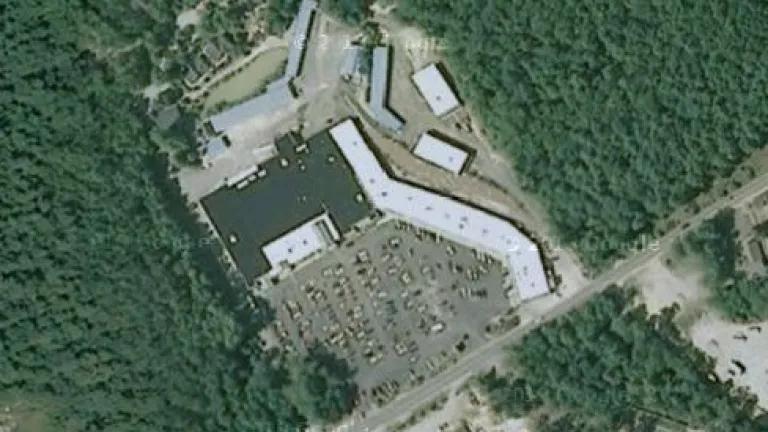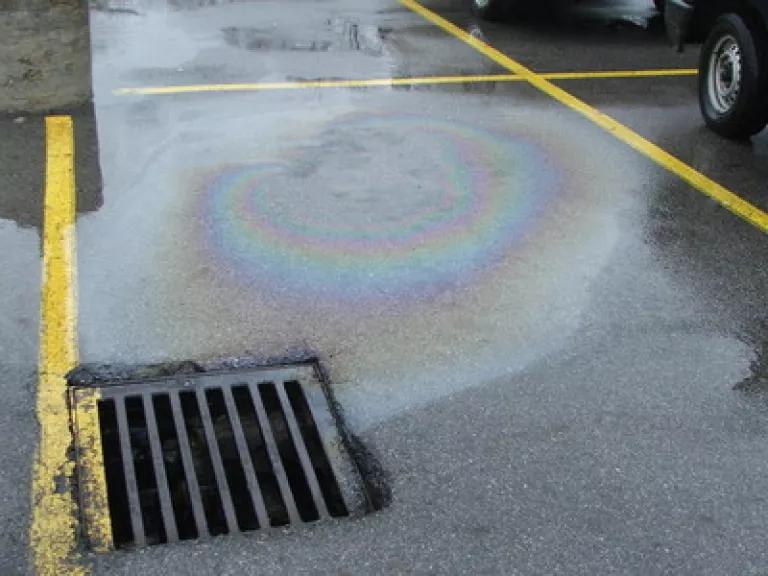NRDC Petitions EPA To Tackle Water Pollution Sources That Hurt Our Economy And Our Health

Today NRDC, together with American Rivers, Conservation Law Foundation, and a number of local partner organizations, filed three petitions with the Environmental Protection Agency (EPA) to address one of the leading and most pervasive sources of water pollution in the country: stormwater runoff from existing developed sites.
Like lots of people, I went on vacation last week for the Fourth of July holiday – to the mountains of western North Carolina. I was hoping to spend some time outdoors hiking, but instead I spent most of the week indoors while the area was inundated by a whopping 14 inches of rain. That’s more than most places get in an entire summer.
Now, western North Carolina is not exactly an urbanized place, but the town does have some large developed sites, like the local Ingles grocery store with its huge parking lot. Every time we ventured out into the rain to pick up groceries, I couldn’t help but notice the massive amounts of dirty water flowing off the parking lot and being channeled into the beautiful nearby streams.
- Google satellite image of the Cashiers, NC shopping center.
Fortunately, this town doesn’t have many large developments. But in more developed areas where a higher percentage of the landscape is covered in impervious surfaces, the impacts of stormwater runoff are much more severe.
We may notice stormwater the most during large rainstorms like the one I experienced last week, but it’s a problem that rears its head every time it rains. Polluted runoff has caused thousands of water bodies nationwide to become impaired – meaning that they do not meet state water quality standards. This runoff threatens our health and costs our communities money due to flooding damage and lost tourism revenue.
The good news is that we can solve the stormwater problem. In many places, sites that are newly developed or redeveloped are required to build in controls that reduce the amount of runoff pollution they generate. These runoff controls often take the form of beautiful green infrastructure practices like green roofs, rain gardens, and roadside trees, which retain rainwater right where it falls by soaking it up or letting it filter into the ground naturally.

- Stormwater-retaining green roof on the NRDC office building in Washington, DC.
But developments put into place in years past usually have no such controls. Just like the Ingles parking lot in Cashiers, North Carolina, existing developments across the country continue to pollute nearby waters with the stormwater they create unabated.
That’s why NRDC is petitioning the EPA to take action. Our waters will never be clean and safe until these existing sources of pollution are addressed.
Fortunately, the Clean Water Act empowers the EPA with the authority – and the responsibility – to fix this problem. Known as “residual designation authority,” a provision in the statute directs the agency to require management of runoff from sites that contribute to violations of water quality standards. We are asking the EPA to require stormwater management for commercial, industrial, and institutional sites in certain areas: watersheds that are impaired by pollutants like copper, lead, zinc, phosphorus, nitrogen, and sediment.
We know from decades of scientific research that sites in these three land use categories consistently create runoff with large amounts of pollutants. That means we know they are contributing to existing local water body impairments. And in turn, they are contributing to problems like contamination of drinking water supplies, beach closures, and fish habitat degradation.

- Polluted parking lot runoff.
Today, we filed petitions in three EPA regions: Region 1 (New England), Region 3 (mid-Atlantic), and Region 9 (southwest and California). We chose these regions because they are home to some of the nation’s most historic and threatened waters, and because our organizations call these regions home too. But stormwater pollution is a nationwide problem, and we think that the solutions we’re asking to be applied in these regions can and should be replicated everywhere that runoff is causing our water bodies to become degraded.
Not only will requiring pollution sources to take action make our waters safer and healthier, but it will also help cities and towns that are financially struggling to meet current clean water requirements. All polluters should help to share the clean-up costs – it’s only fair. We hope that EPA will grant these petitions without delay so that existing sources of pollution will be held accountable for reducing their impacts on our communities.

